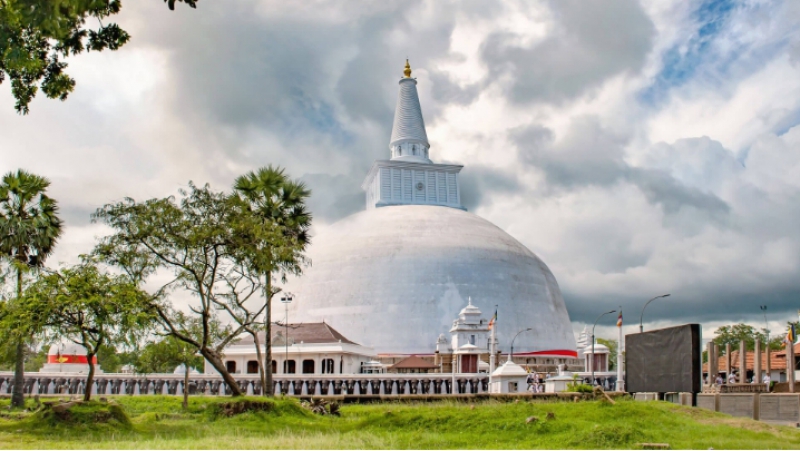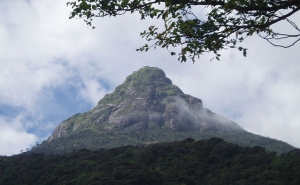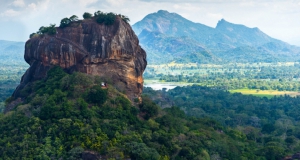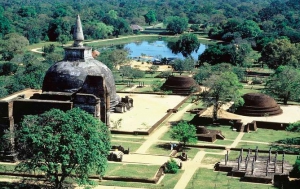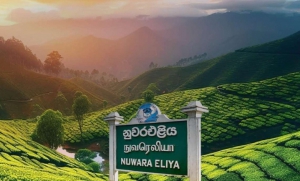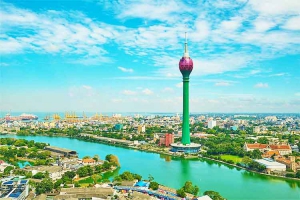Anuradhapura
In the ancient city of Anuradhapura, the first kingdom of Sri Lanka was established as early as 160 years before Christ, which was able to maintain its supremacy for over a thousand years. Today, you walk reverently through the ruins of the former stronghold of Buddhist philosophy and wisdom. Mighty stupas are spread over the "Holy City" – a must for cultural travellers! And a part of Sri Lanka's famous cultural triangle.
In December and May/June, thousands of pilgrims flock to the city on the day of the full moon. Since 1982, the Holy City of Anuradhapura has also been a UNESCO World Heritage Site.
Things to do in Anuradhapura
- Visit to the "Holy City": The archaeological park with all the monastery ruins, stupas and the Bodhi tree is located on the other side of the river as the "New Town", where most of the inhabitants live and most of the accommodations are located. For the visit, you definitely need a wheeled vehicle. The most atmospheric way to visit the "Holy City" is by bike, most effectively with a three-wheeler.
Admission: Tickets for adults cost 25 USD, children pay half.
Attention : it is important to wear appropriate clothing: shorts and off-the-shoulder tops are taboo. In the temples, shoes must be taken off, and it is best to orient oneself to the local believers. You should not (let yourself be photographed) in front of statues and should not touch them. - The three monasteries Maha Vihara, Abhayagiri Vihara and Jetavana Vihara were for centuries a point of contact for Buddhist scholars from all over the world. Today, only ruins of the mighty building structures remain. This makes it difficult to imagine the former monastery town in its full glory. Nevertheless, the ruins alone bear impressive witness to the former metropolis. The mighty stupas help with orientation.
- The sacred Bodhi tree, which stands on the site of the former Maha Vihara monastery, is the geographical and spiritual center of the city. It grew from a branch of the Bodhi tree in Bodhgaya, India, under which Buddha found his enlightenment. The tree is considered one of the oldest trees in the world. All trees of this species in Sri Lanka are descended from him.
- After dark, the massive stupas in Anuradhapura show their magical side in discreet artificial lighting. Two thousand years have not diminished its importance.
- Mihintale, 15 km away, was also an important Buddhist monastery in the heyday of Anuradhapura. The impressive mountain range is still of central religious importance for Sinhalese Buddhism. Ruins of the monastery and numerous stupas can be visited. The panoramic views from here are particularly breathtaking.
Best time to visit and climate in Anuradhapura
June to August and February are the driest months to travel in Anuradhapura, and those who travel at this time can continue their route to Minneriya National Park and the beaches of the east coast.
The daytime temperatures of Anuradhapura are around 30 degrees all year round, although it can be very hot with up to 34 degrees, especially in March/April. At night, the thermometer will not drop below 20 degrees. In the European winter months of December to March, you can continue your journey to the beaches of the south coast of Sri Lanka.
For those who want to avoid the rain around the Anuradhapura sites, most of the rainfall falls in the months of April and October to December.
Itineraries through Anuradhapura
Anuradhapura will be an absolute highlight for those interested in culture. Many plan a whole day in the "Holy City", while they usually spend the night in a central place of the cultural triangle, such as Dambulla. From here, in addition to Anurahapura, you can also get to Polonnaruwa, Sigiriya or Ritigala in day trips.
There are connections to the ancient sites of Polonnaruwa (100 km or 3.5 hours by bus) and Dambulla (65 km), to the beautiful city of Kandy (140 km or 4 hours by bus), to the beaches of Trincomalee (100 km or 3.5 hours by bus) and once a day to the Jaffna peninsula in the north.
On the 200 km to Colombo, it is faster by train (5 hours) than by bus. You can also travel to Polonnaruwa, Trincomalee and Jaffna by train.


